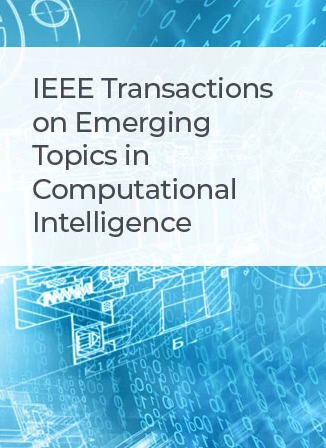Optimal Navigation of an Automatic Guided Vehicle With Obstacle Constraints: A Broad Learning-Based Approach
IF 5.3
3区 计算机科学
Q1 COMPUTER SCIENCE, ARTIFICIAL INTELLIGENCE
IEEE Transactions on Emerging Topics in Computational Intelligence
Pub Date : 2024-12-30
DOI:10.1109/TETCI.2024.3520481
引用次数: 0
Abstract
Trajectoryplanningis a critical component of realizing intelligence in autonomous unmanned systems. While learning-based control offers intriguing real-time control properties and generalization, it has shortcomings when it comes to long offline training requirements. To address this limitation, this paper introduces a real-time optimal navigation control approach based on Broad Learning (BL) for the trajectory planning problem of Automatic Guided Vehicle (AGV) in the presence of obstacle constraints. The proposed framework fully leverages the optimality achieved through traditional optimal control methods and the novel BL approach. To achieve this, the optimal control problem (OCP) is first constructed and then solved offline for the long-term trajectory planning problem for an AGV working within obstacle constraints. After that, an optimal state-control dataset is acquired with the task information embedding. Subsequently, the BL architecture is meticulously designed and trained offline using the dataset to acquire proficiency in the optimal state-control mapping, and a secondary improvement based on the spectral norm constraint is introduced into the original BL architecture. Consequently, this well-trained BL-based controller is proficiently employed to provide feedback control based on the AGV's current state. The numerical simulation section provides a comparative analysis of the network training time consumption for the BL method and the Deep Neural Network (DNN) method, and the impact of different feature representation methods on the BL-based controller is discussed. Additionally, a local re-planning framework for scenario alterations is proposed based on favourable performances. It further showcases the method's ability to mitigate the excessively long offline training times typically associated with learning-based approaches.具有障碍物约束的自动导航车辆的最优导航:一种基于广义学习的方法
轨迹规划是自主无人系统实现智能化的重要组成部分。虽然基于学习的控制提供了有趣的实时控制特性和泛化,但当涉及到长时间的离线训练要求时,它有缺点。针对这一局限性,提出了一种基于广义学习(BL)的实时最优导航控制方法,用于存在障碍物约束的自动导引车(AGV)的轨迹规划问题。该框架充分利用了传统最优控制方法和新型BL方法的最优性。为了实现这一目标,首先构建了AGV在障碍物约束下的长期轨迹规划问题的最优控制问题(OCP),然后进行了离线求解。然后,通过任务信息嵌入,获得最优状态控制数据集。随后,利用数据集对BL架构进行精心设计和离线训练,以熟练掌握最优状态控制映射,并在原始BL架构中引入基于谱范数约束的二次改进。因此,这种训练有素的基于bl的控制器被熟练地用于根据AGV的当前状态提供反馈控制。数值仿真部分对比分析了BL方法和深度神经网络(Deep Neural network, DNN)方法的网络训练耗时,并讨论了不同特征表示方法对基于BL的控制器的影响。此外,根据良好的表现,提出了一个场景改变的当地重新规划框架。它进一步展示了该方法的能力,可以减少通常与基于学习的方法相关的过长的离线训练时间。
本文章由计算机程序翻译,如有差异,请以英文原文为准。
求助全文
约1分钟内获得全文
求助全文
来源期刊

IEEE Transactions on Emerging Topics in Computational Intelligence
Mathematics-Control and Optimization
CiteScore
10.30
自引率
7.50%
发文量
147
期刊介绍:
The IEEE Transactions on Emerging Topics in Computational Intelligence (TETCI) publishes original articles on emerging aspects of computational intelligence, including theory, applications, and surveys.
TETCI is an electronics only publication. TETCI publishes six issues per year.
Authors are encouraged to submit manuscripts in any emerging topic in computational intelligence, especially nature-inspired computing topics not covered by other IEEE Computational Intelligence Society journals. A few such illustrative examples are glial cell networks, computational neuroscience, Brain Computer Interface, ambient intelligence, non-fuzzy computing with words, artificial life, cultural learning, artificial endocrine networks, social reasoning, artificial hormone networks, computational intelligence for the IoT and Smart-X technologies.
 求助内容:
求助内容: 应助结果提醒方式:
应助结果提醒方式:


